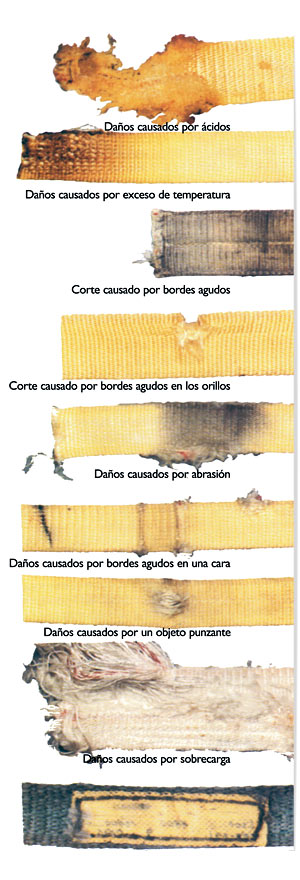Maintenance and inspection


MAINTENANCE
ALWAYS:
- Store and handle belt slings correctly.
- Inspect belt slings and accessories before use and before placing into storage.
- Position sling so that the load is uniformly spread over the width and protect the sling from sharp edges.
- Apply the correct mode factor for the slinging arrangement.
NEVER
- Overload slings due to the weight of the load or the mode of use.
- Drag slings over floors etc or attempt to pull trapped sling from under loads.
- Use a sling to drag a load.
- Attempt to shorten, knot or tie belt slings.
- Expose belt slings to direct heat or flames.
- Use belt slings at temperatures above 100ºC or below - 40ºC.
- Use belt slings to chimicals without consulting the supplier.
- Shock load belt slings.
- Use belt slings which are cut or have loose or damaged stitching.
- Use a sling with a missing / damaged label or illegible markings.
SAFE USE OF SLINGS
1.Good slinging practice must ensure that the load is as safe and secure in the air as it was on the ground and that no harm is done to the load, lifting equipment, other property or persons.
2. Establish the weight of the load, ensure the lifting method is suitable and inspect the sling and attachments for obvious defects. Prepare the landing area making sure the floor is strong enough to take the load.
3. Ensure the lifting point is over the center of gravity. Any loose parts of the load should be removed or secured. Secure the sling firmly to the load by hooks onto lifting points or shackles etc. The sling must not be twisted, knotted or kinked in any way.
4. Use packing to prevent damage to the sling from corners or edges and to protect the load.
5. Do not exceed the SWL or rated angle. Any choke angle must not exceed 120° and any basket 90°.
6. Do not hammer, force or wedge slings or accessories into position; they must fit freely. When attaching more than one sling to the hook of the appliance use a shackle to join the slings and avoid overcrowding the hook.
7. Ensure the load is free to be lifted and not, for example, bolted down.
8. Check that there are no overhead obstacles such as power lines.
9. Keep fingers, toes etc clear ensuring they do not become trapped when lifting, lowering or controlling loads.
10. Make a trial lift by raising the load a little to ensure it is balanced, stable and secure and if not lower it and adjust the slinging arrangement.
11. Where appropriate use tag lines to control the load.
12. Except where special provision is made, do not allow anyone to pass under or ride upon the load. The area should be kept clear.
13. Make a trial set down, ensure the sling will not become trapped and the load will not tip when the slings are released. Use supports which are strong enough to sustain the load without crushing.
14. Place the hooks of free legs back onto the master link and take care to ensure that empty hooks do not become accidentally engaged.
16. On completion of the lift return all equipment to proper storage.
INSPECTION
Before each use inspect belt slings and, in the event of the following defects, refer the sling to a competent personfor thorough examination.
Methode
- Lay the sling horizontally on the well illuminated flat surface.
- Check the sling on its full length.
- Only a qualified person should do the inspection.
- If the sling presents any dommage for the picture on the right, it should be disposed of.












